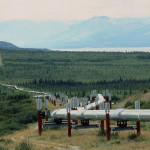Presidents Yoweri Museveni and John Magufuli of Tanzania laid a foundation stone last weekend in Tanzania for the construction of a US$3.55 billion-crude export pipeline that would pump Ugandan oil for export.
The 1,445 km-project, set for completion by 2020, will run from Uganda’s western oil rich district of Hoima, where crude reserves were discovered in 2006, to Indian Ocean seaport of Tanga in Tanzania.
If completed, the project will become “the longest electrically heated crude oil pipeline in the world,” said Guy Maurice, Senior Vice President of Africa at Total Exploration and Production.
Total is one of the owners of Ugandan oilfields, alongside China’s Cnooc and Britain’s Tullow Oil.
Both Presidents Magufuli and Museveni urged the three joint venture partners to speed up construction of the pipeline.
“We don’t need to delay the completion of the project for almost three years. They can do it even night and day to ensure the project is completed as quickly as possible,” Magufuli said, urging the companies to finish the project before 2020.”
Uganda estimates overall crude reserves at 6.5 billion barrels, while recoverable reserves are seen at between 1.4 billion and 1.7 billion barrels.
Uganda Tanzania opted to pass the pipeline via Tanzania because it was a “least cost and least risky”. But also Tanzania offered several concessions to make the pipeline profitable in spite of the falling global crude oil prices.
Tanzania, located South of Uganda also agreed to waive taxes, offered to take up shares in the pipeline project and charge a tariff of US$12.2 per barrel to make the project feasible, he said.
The function was attended by Tanzanian Vice President Samia Suluhu, the Prime Minister Kassim Majaliwa and the Tanzanian First Lady Janet Magufuli.
On the Ugandan side were First Deputy Prime Minister and Minister for East African affairs Kirunda Kivejinja, the Energy and Mineral development Minister Irene Muloni, the Finance Minister Matia Kasaijja and the State Minister for Bunyoro Affairs Ernest Kiiza among others.
The project will create 10,000-15,000 direct jobs while temporary ones will peak to 30,000.







